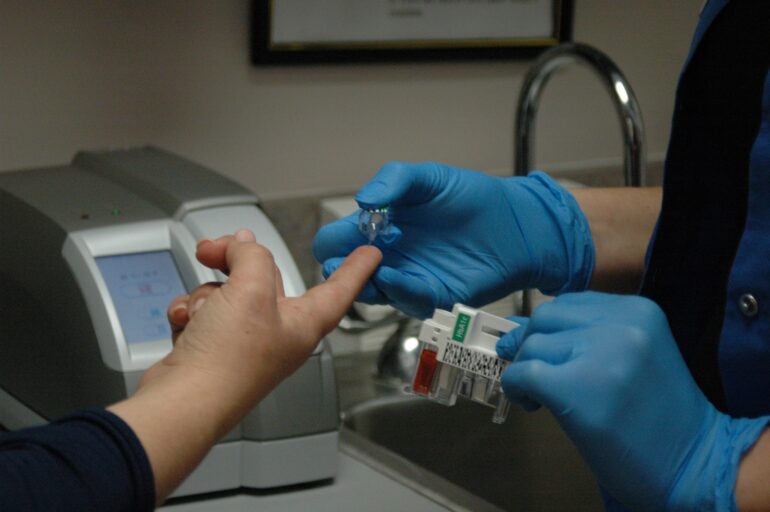TL;DR:
- Recent study in BMC Medicine uses machine learning to identify diabetes in individuals with normal fasting glucose levels.
- Diabetes is a growing health challenge, with many undiagnosed cases leading to complications.
- Traditional methods relying on fasting blood glucose may miss cases.
- Study collected and analyzed physical examination data, applying machine learning techniques.
- Deep neural network (DNN) showed superior performance in identifying diabetic patients.
- Streamlining the model by focusing on 13 key features improved accuracy.
- An online tool, DRING, offers personalized diabetes risk assessments.
- Results show the potential to transform diabetes detection and management.
Main AI News:
In the realm of public health, the relentless rise of diabetes mellitus (DM) presents a formidable challenge. Asymptomatic cases of diabetes often go undetected, ultimately leading to severe complications. According to the International Diabetes Federation, the number of diabetic individuals is projected to surge from 537 million in 2021 to a staggering 643 million by 2030. This alarming trend necessitates a proactive approach to early diagnosis and intervention.
Traditional methods of diagnosis, such as relying solely on fasting blood glucose levels, have proven inadequate in capturing many cases. A significant portion of individuals with diabetes presents normal fasting glucose levels, highlighting the urgency for more comprehensive screening methods.
A groundbreaking study recently published in BMC Medicine has harnessed the power of machine learning to address this issue. Researchers have successfully identified diabetic individuals within populations exhibiting normal fasting glucose levels. Leveraging common physical examination indexes and employing cutting-edge machine learning techniques, this study offers a ray of hope for early diabetes detection and intervention.
Revolutionizing Diabetes Detection
The study gathered physical examination data from three hospitals, meticulously categorizing it into three distinct datasets: D1, D2, and D3. To tackle the challenge of class imbalance in these datasets, researchers implemented the synthetic minority over-sampling technique (SMOTE) and standardized the data using Z-score normalization.
The heart of the study lies in the computational model, which employs multiple machine learning techniques. Among these, the deep neural network (DNN) emerged as the star performer, demonstrating remarkable accuracy and sensitivity.
Streamlining the Predictive Model
Researchers recognized the need to streamline the predictive model by eliminating potential redundancies among the initial 27 features. Through manual curation and max relevance and min redundancy (mRMR) analysis, 13 key features were identified as paramount. This focused approach significantly enhanced the model’s performance, offering a more efficient and accurate diabetes risk assessment.
DRING: An Innovative Tool
Taking their research a step further, the study introduced an online tool named DRING. Beyond broad risk factors, this tool utilizes a permutation feature importance algorithm to provide a personalized assessment of diabetes onset risk. This innovation paves the way for tailored interventions based on individual risk profiles, a paradigm shift in diabetes prevention and management.
Unveiling the Study’s Impact
The study’s results are nothing short of remarkable. Over the span of 2015 to 2018, data from the First Affiliated Hospital of Wannan Medical College yielded 61,059 samples with normal fasting glucose levels. Astonishingly, nearly 1% of these participants were identified as diabetic, based on a Hemoglobin A1c (HbA1c) level threshold of 6.5%.
Furthermore, the diabetic group exhibited distinct characteristics, including an average Body Mass Index (BMI) 1.08 units higher and an average age older by 10.6 years compared to the non-diabetic group. The study pinpointed key differentiators such as absolute lymphocyte count (ALC), age, fasting blood glucose (FBG), BMI, and white blood cell count (WBC), along with 11 other significant features.
Validation on independent test sets, D2 and D3, revealed impressive Area Under the Curve (AUC) values exceeding 0.95 on D2 and approaching 0.90 on D3. The model’s proficiency in identifying undiagnosed diabetics within the normal fasting glucose population was evident, underscoring its potential to revolutionize diabetes screening.
Personalized Diabetes Risk Assessment
The study delved deeper into the identification of paramount risk factors, with ALC, FBG, age, sex, and BMI emerging as the top five variables. Notably, the research reaffirmed the role of elevated FBG levels within the normal range as an amplifier of diabetes risk. Age and BMI were established as well-known risk factors, while gender differences in diabetes risk were highlighted. Additional factors, including mean corpuscular volume (MCV) and absolute monocyte count (AMC), were also identified.
In a groundbreaking move, the study laid the foundation for personalized diabetic risk assessments. By leveraging permutation feature importance (PFI), individual risk profiles can be dissected and tailored interventions implemented, even when fasting blood glucose levels appear within the normal range.
Conclusion:
The integration of machine learning in diabetes detection represents a paradigm shift in the healthcare market. It addresses the pressing need for early diagnosis, particularly among individuals with normal fasting glucose levels. This breakthrough technology not only reduces the burden on healthcare systems but also opens doors for personalized interventions, ushering in a new era of precision healthcare. Organizations in the healthcare sector should invest in and adopt these innovative tools to stay at the forefront of diabetes management and prevention.

